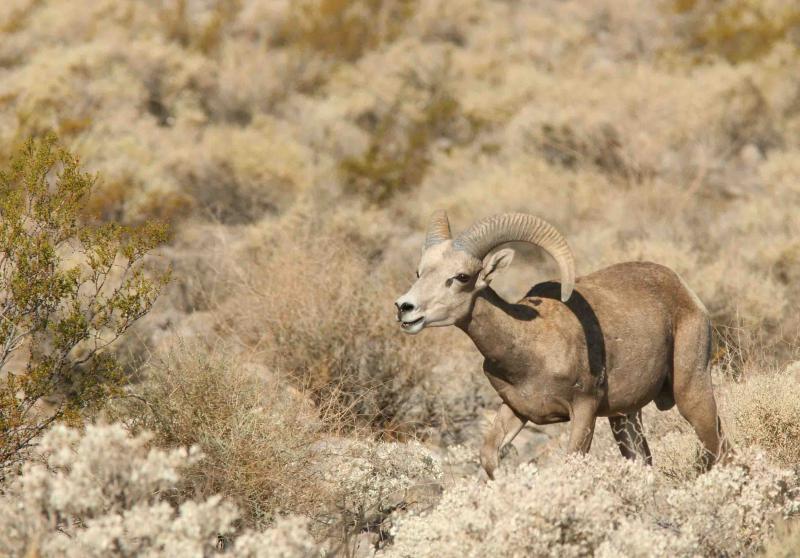
Environmental organizations, including Sierra Club, scored a victory in a long battle to oppose a landfill near Joshua Tree National Park that would have threatened wildlife and habitat in the desert area. In late May, the Sanitation Districts of Los Angeles County announced it would no longer pursue plans for the Eagle Mountain Landfill Project outside the national park, a move that protects endangered desert tortoise populations from encroachment.
“Joshua Tree National Park and its Gateway Communities will no longer be haunted by the specter of the long-opposed, proposed Eagle Mountain landfill," David Lamfrom, California Desert Senior Program Manager for the National Parks Conservation Assn. (NCPA), said in a statement. "After 15 years of waging legal, political, and community-based battles, the land, air, water, views, and species and that makes this one of America’s favorite National Parks are safer, thanks to the Los Angeles County Sanitation District’s decision to trash this project, once and for all.”
The Sierra Club Angeles Chapter joined the parks organization in applauding the sanitation district for “making the right decision to move away from purchasing this property to develop this landfill project. Their actions help protect a Southern California treasure, and move the region forward in advocating for increased recycling and diversion to manage Southern California’s waste.”
History of the landfill plan
In the 1950s, 29,775 acres of public land located in the Eagle Mountains was carved out of the current Joshua Tree National Park for iron ore mining in support of the nation’s post-war economic recovery. Kaiser Steel Corp. operated an open pit, iron-ore mine at the site from 1946 to 1983. In 1955, Congress granted Kaiser a patent to operate "a camp site or mill site in connection with its mining operations" on 461 acres of land and also granted a 52-mile-long right-of-way to enable Kaiser to build a rail line from Eagle Mountain, through the desert to its steel mill in Fontana, with a condition that if the camp sites/mill sites and rights-of-way were not used in connection with its mining operations for a "continuous period of seven years," the lands and right-of-way would revert back to public ownership.
Kaiser ceased mining in 1983 when they went bankrupt but emerged from bankruptcy in 1987 with a proposal to build the world’s largest landfill at Eagle Mountain. Local environmentalists successfully opposed this ill-conceived project for 25 years when finally, in February 2011, the U.S. Supreme Court refused to hear Kaiser/MRC‘s appeal. Despite this court action, the project planning continued to move forward with plans to fix the proposal to develop a landfill at the site.The proposed Eagle Mountain landfill was slated to have been a repository for Los Angeles County's garbage for 117 years.
Concerned that the proposal was moving forward, the Angeles Chapter re-established its position to oppose the proposed Eagle Mountain Landfill in April 2013. In addition, the Sierra Club joined other environmental organizations, including the NPCA in urging the Bureau of Land Management to return the acreage to public ownership as part of Joshua Tree National Park.

Environmental concerns
Of great concern was National Park Service research demonstrating that a landfill at Eagle Mountain would be harmful to the federally threatened desert tortoise populations due to an increase in raven and coyote populations which prey on desert tortoise and other desert wildlife. According to the research, establishing the landfill could harm 75% of Joshua Tree National Park’s threatened desert tortoise habitat as well as critical tortoise habitat outside the park.
Further, the construction of the Eagle Mountain landfill adjacent to the park would have had devastating consequences for wildlife, the region’s already scarce water supply, and the entire surrounding fragile desert ecosystem. The landfill would have severely impact air quality, night sky resources, wilderness values, and threatened and endangered wildlife. It could also have a negative impact on visitor experiences in wilderness areas of one of the region’s premier national parks.
Angeles Chapter resolution
In opposing the landfill at Eagle Mountains, the Angeles Chapter laid out the threats to the environment in its resoution. Here are some of the highlights:
"The Angeles Chapter Conservation Committee recommends that the Angeles Chapter of the Sierra Club oppose the proposed Eagle Mountain Landfill and urge the Bureau of Land Management to return all 29,775 acres carved out of Joshua Tree National Monument for the Eagle Mountain Mine to public ownership as part of Joshua Tree National Park.
"The Sierra Club Angeles Chapter:
"Notes with deep concern that the proposed Eagle Mountain Landfill would deposit up to 20,000 tons of trash (primarily from Los Angeles County) each day for 117 years in remote canyons, hillsides and abandoned mining pits that would be surrounded on three sides by Joshua Tree National Park’s federally designated wilderness.
"Acknowledges recent National Park Service research that shows the proposed landfill would artificially inflate populations of predatory ravens and coyotes which would adversely impact 75% of Joshua Tree National Park’s threatened desert tortoise habitat, as well as critical tortoise habitat outside the park.
"And insists that the proposed landfill would harm Joshua Tree National Park’s air quality, wildlife, groundwater and aquifers, night sky resources, wilderness character, and visitor experience.
"Opposes the proposed Eagle Mountain Landfill, due to the aforementioned environmental harm it would create, and due to the fact that cities in Los Angeles County are already in the process of implementing successful municipal solid waste reduction and recycling programs that have greatly reduced—and will continue to reduce—residual MSW, to the point that there is no need for a landfill at Eagle Mountain as a repository for trash from Los Angeles County.
"Urges the Bureau of Land Management to return all 29,775 acres carved out of Joshua Tree National Monument for the Eagle Mountain Mine to public ownership as part of Joshua Tree National Park."
Photos by David Lamfrom
Related content:
Alexander Padilla
July 12, 2013, 10:52 pm
Faye Stapleton
June 6, 2013, 10:52 am
Brian
June 6, 2013, 4:20 pm
Alex Padilla
July 12, 2013, 10:53 pm
Ginger
October 30, 2013, 1:29 pm
William Fordes
June 6, 2013, 9:22 am